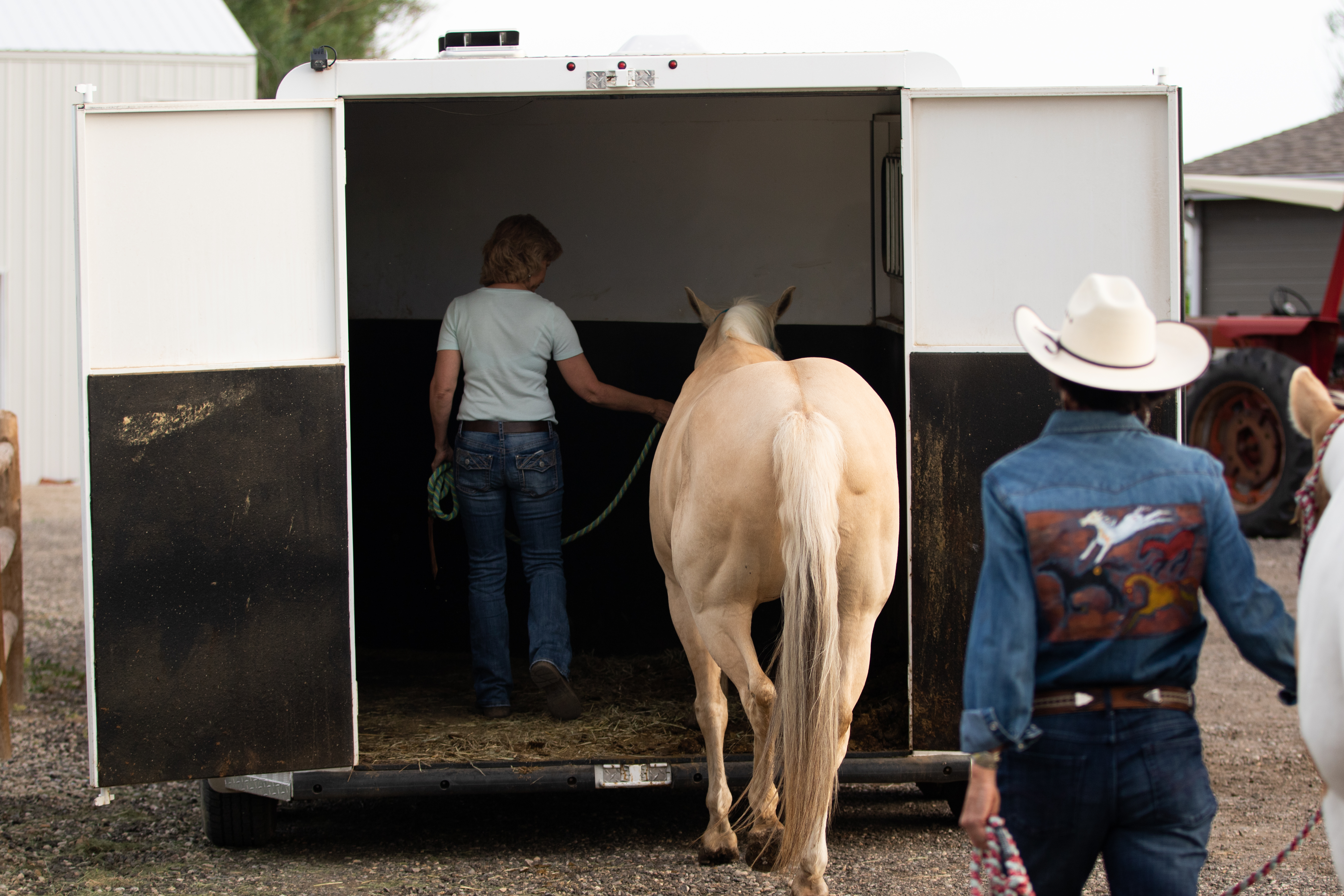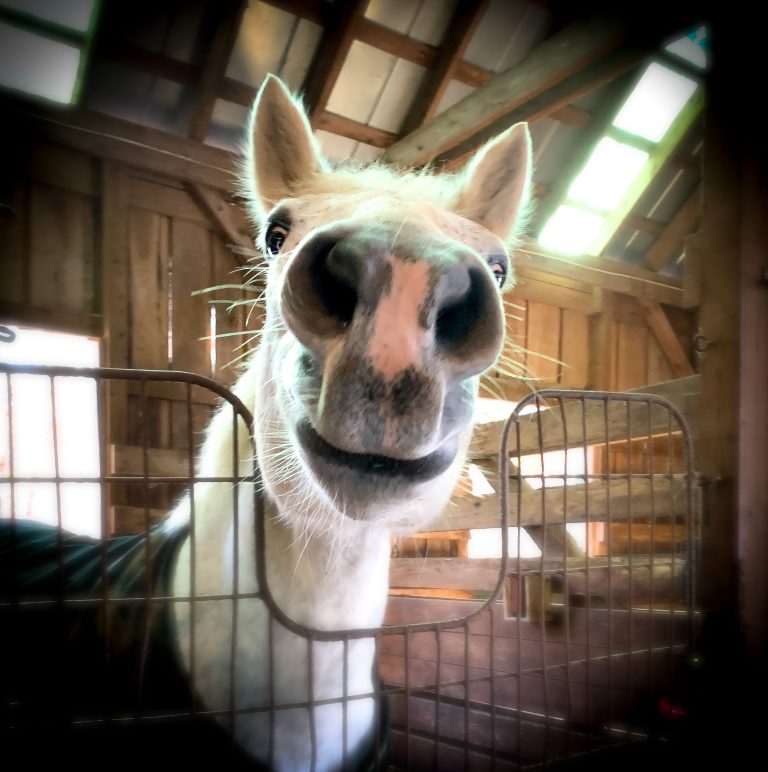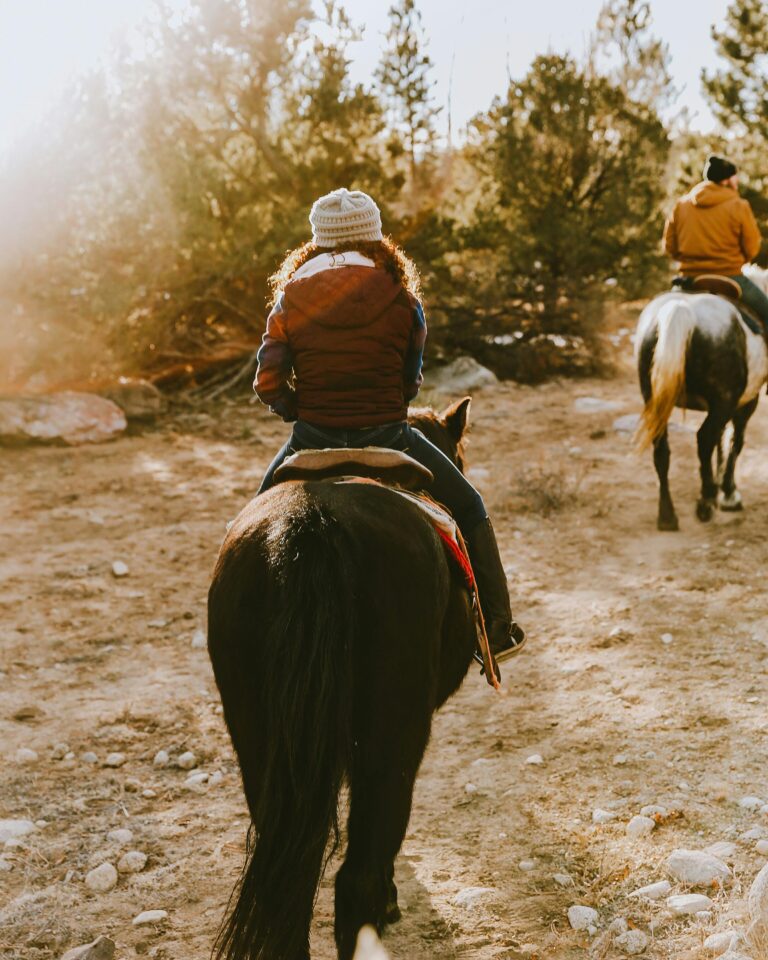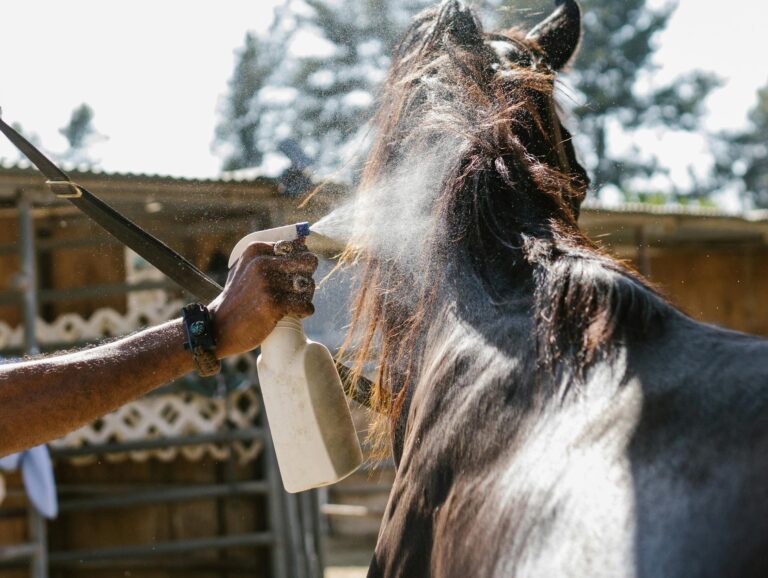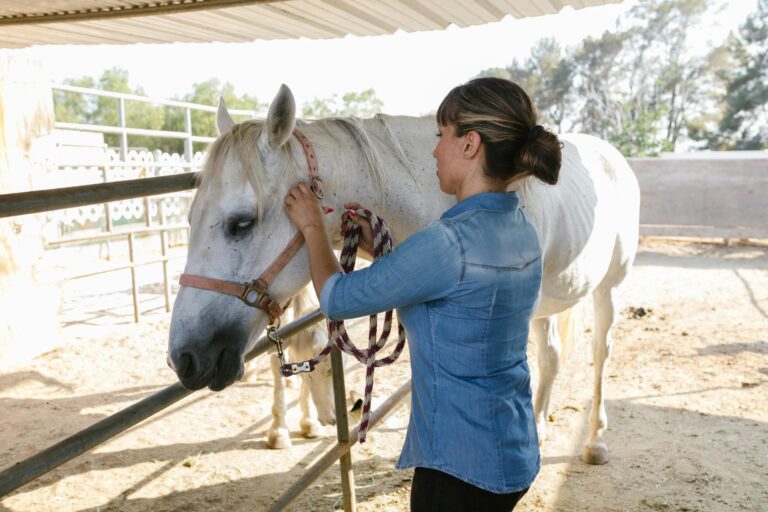Do you have trouble with your horses pawing while in the trailer? Check out this Q&A with Julie Goodnight.
Q:I have a 19-year-old Quarter Horse gelding that paws in the trailer. I travel with him quite and bit and have no problems loading him in the trailer, but he paws when we come to a stop. I recently purchased a 7-year-old Quarter Horse gelding, and when I put him in the trailer to bring him home, he also started pawing. I’d like to solve this problem beforeI put them together in the trailer and exacerbate the problem. Any suggestions?
-Marcy Luttrell, Indiana
A: It’s important to understand where pawing behavior stems from. It signals frustration in a horse and his desire to move. Sometimes that frustration can morph into anger, which is expressed when a horse stomps his foot.
Fixing a pawing problem is a complicated matter, especially in a horse of an advanced age or one with a nervous and impatient temperament. My best advice for you and your aged horse is to wait to load him until absolutely necessary—right before you head down the driveway. Some horses get anxious in the trailer, so keeping time spent standing in a it to a minimum will help ease that anxiety. While you’re moving, the horse will usually stand on all four feet for better balance, so minimizing time spent standing in a stopped trailer is best.
If your horse paws when you stop, you can lightly bump your brakes to get him standing on all four feet. But remember, if you tap your brakes to jar one horse, it jars any other horses in the trailer, too.
Groundwork outside the trailer might also help a pawing horse get over his frustration and develop more patience. I work with my young horses to get them to stand still like statues in all situations. Horses can be impulsive about moving, and this exercise helps teach them to control their movements.
I start by tying my young horses, yearlings and older, to a “patience post” (a hitching post or rail situated in a shady area). It’s a good idea to put down rubber mats at the rail or post; that way, if a horse does paw, he won’t be able to dig a big hole. Let him experience other horses coming and going, and only untie him when he’s relaxed and not pawing. Your horse’s temperament will really come out in this situation. Depending on how fidgety a horse is, he might spend several hours a day tied until he figures out that he’ll be there a while, so he needs to be patient.
Also work on ground tying. It’s another skill that requires your horse to be patient. Outfit your horse in a rope halter with a 12- to 15-foot lead. Stand facing your horse, a little to the left side, with your toes pointing at his shoulder. Tell your horse “whoa.” Correct him every time he moves, using enough pressure with the rope to motivate him to think before he moves again. Increase the distance between you and your horse, until you’re holding the very end of the lead and laying it on the ground. Practice at times when your horse wouldn’t want to stand still—when horses are coming and going from the barn or working in the nearby arena, for example.
When you work on ground tying, remember that your goal is to be in control of your horse’s feet, even when he’s not moving. It’s a skill that you have to reinforce and practice over and over. Most important: Be patient. Don’t mirror your horse’s impatience, or you’ll limit your chance of success.
